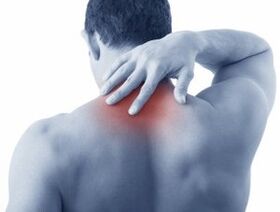
Osteochondrosis - dystrophic changes in the articular cartilage and bone tissue are increasingly found.
Separate symptoms of osteochondrosis can also occur at the age of 18.This is explained by a seated lifestyle.
The disease can influence every area of the spine, 52 varieties of osteochondrosis are distinguished.
The first place belongs to the lumbosacral, the second place in relation to the frequency of occurrence is part of the cervix osteochondrosis (osteochondrosis of the cervical vertebrae).
Cervical osteochondrosis - characteristics, stages of development
There are 4 stages of cervical osteochondrosis that have their own properties and symptoms.
- In the first stageThe cartilage is affected.A person suffering from osteochondrosis of the 1st degree feels some complaints, tensions in the muscles, but nothing more.The symptoms at this stage are insignificant and do not cause a patient to see a doctor.
- The second stageOsteochondrosis is characterized by the beginning of the destruction of the fibrous ring, a decrease in the lumen between the vertebrae, while it is possible to pinch the vertebrae and the occurrence of unpleasant sensations.The cervical osteochondrosis of the second degree is most common.
- The third stageThe disease is characterized by the further destruction of the intervertebral disc, the deformation of the vertebral bodies, the formation of bone processes, the appearance of a hernia (lead of a fiber ring).
- In the fourth stageOsteochondrosis is painful to move, the vertebrae are destroyed and strongly deformed.
The cervical osteochondrosis becomes complicated by small vertebral sizes.The crossing of the occipital bone of the skull with the cervical vertebrae is pierced by nerve-ended, blood and lymphatic vessels.
Features of cervical osteochondrosis.
- The movable cervix region is articulated with a sedentary breast department.This increases the strain of the vertebrae of the cervix region.
- The vertebrae of the vertebrae with cervical osteochondrosis occur in a lateral direction.
- The vertebral artery, which leads through the side holes of 2-6 cervical vertebrae, is involved in destructive processes.
Symptoms and signs of cervical osteochondrosis.

Common manifestations of cervical osteochondrosis are headaches that occur in the back of the head and spread in the Parietal and temporal region.During the tightening of the disease, the pain is so serious that it is difficult to turn or tilt your head.
The compression of the vertebral artery with cervical osteochondrosis manifests itself through dizziness and flickers fly in front of the eyes.With a sharp turn of the head you can lose consciousness.Pain is put in her hands and shoulders.
The defeat of the vertebral artery also manifests itself in violation of coordination, hearing and vision.
When the nerve is caught in the vertebrae of the neck area, the pain rises from the neck to the shoulder blade and through the hand to the fingers.The patient tingling, the appearance of goosebumps, deafness of the fingers, forearms, brushes.The pain exacerbates until morning, the breast gives.
The damage to the vertebral artery manifests itself through pulsating pain in the temples of the headscarves, neck and temple.Loss of consciousness, nausea, pain in the eyes, pain in the heart is possible.
A violation of the blood circulation can lead to a deterioration in memory and a decrease in intelligence.Pressure pain in the heart is similar to the symptoms of a real angina pectorator.
The causes of the disease are a decrease in physical activity with the age of physical activity, the occurrence of obesity, hypothermia, violation of congenital attitude or acquired injuries.
The disease can also affect people who are involved in severe physical work and office workers.





































